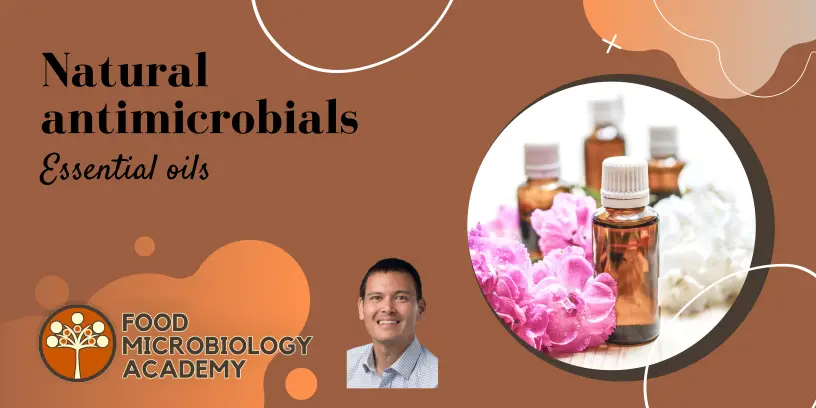Introduction and overview of essential oils:
The preservation of food is of paramount importance to ensure its safety, quality, and extended shelf life. Traditional methods often rely on chemical additives, but there is growing interest in natural alternatives. Essential oils, derived from various plants, offer a promising solution due to their antimicrobial properties. This article explores how essential oils can be utilised to extend the shelf life of food, discussing their mechanisms of action, application methods, and potential benefits.
Essential oils are highly concentrated aromatic compounds derived from various parts of plants, including leaves, flowers, stems, bark, and roots. They are typically extracted through methods such as steam distillation, cold pressing, or solvent extraction, resulting in a concentrated oil that carries the distinct fragrance and properties of the plant.
Essential oils are composed of a complex mixture of volatile organic compounds, including terpenes, phenols, aldehydes, ketones, esters, and others. These compounds contribute to the characteristic aroma, flavour, and therapeutic properties of each essential oil.
While essential oils are commonly associated with their aromatic uses in perfumes, candles, and diffusers, they also have a wide range of applications in various industries, including cosmetics, aromatherapy, cleaning products, and food and beverage production.
In the context of food, essential oils are utilised for their flavoring and aromatic properties. They can provide intense, natural flavors and aromas to enhance the sensory experience of food products. Additionally, essential oils have been recognised for their potential antimicrobial and antioxidant properties, which make them valuable in food preservation.
It is important to note that essential oils are highly concentrated and should be used with caution. They are typically diluted before use, as direct contact with the skin or ingestion in large quantities can cause irritation or adverse effects. Proper handling, storage, and dosage control are essential to ensure their safe and effective use.
The selection of essential oils for specific applications depends on the desired flavour, aroma, and functional properties. Common examples of essential oils used in food production include peppermint, lemon, lavender, cinnamon, rosemary, and orange, among many others. Each essential oil has its own unique composition and characteristics, offering a diverse range of flavor profiles and potential benefits.
Quality control and sourcing are crucial considerations when using essential oils in food products. Ensuring that the oils are obtained from reputable sources and undergo proper testing for purity and composition is important to maintain consistency and safety.

Mechanisms of action:
Essential oils contain a complex mixture of volatile compounds that contribute to their antimicrobial activity. These compounds can target and disrupt the cellular structures and functions of microorganisms, inhibiting their growth and survival. The primary mechanisms of action of essential oils against foodborne pathogens and spoilage microorganisms include:
- Disruption of cell membranes: Essential oil components can interact with the lipids in microbial cell membranes, causing disruption and leakage of cellular contents, leading to cell death.
- Inhibition of enzymatic activity: Essential oils can interfere with key enzymatic processes in microorganisms, inhibiting essential metabolic pathways and impairing their growth and replication.
- Oxidative stress: Some essential oils have antioxidant properties, which can induce oxidative stress in microorganisms, damaging their DNA, proteins, and other cellular components.
- Alteration of pH and ion balance: Certain essential oil compounds can disrupt the pH and ion balance within microbial cells, leading to metabolic dysfunction and cell death.
Application methods:
- Direct incorporation: Essential oils can be directly added to food products during preparation or processing. This method is commonly used in the production of flavored oils, dressings, marinades, and sauces, providing both flavor and antimicrobial benefits.
- Edible coatings and films: Essential oils can be incorporated into edible coatings or films that are applied to the surface of food products. These coatings create a protective barrier, reducing moisture loss and inhibiting microbial growth.
- Antimicrobial washes: Essential oils can be used as antimicrobial washes for fresh produce. Washing fruits and vegetables with diluted essential oil solutions helps remove surface contaminants and reduce microbial populations.
- Active packaging: Essential oils can be encapsulated or incorporated into packaging materials to provide antimicrobial properties. This active packaging can release essential oil vapors, inhibiting microbial growth and extending the shelf life of packaged foods.

Benefits and advantages:
- Natural and consumer-friendly: Essential oils are derived from natural plant sources, making them appealing to consumers seeking natural and additive-free food products.
- Broad-spectrum activity: Essential oils have demonstrated antimicrobial effects against a wide range of foodborne pathogens and spoilage microorganisms, making them versatile in food preservation.
- Synergistic effects: Essential oils often contain multiple active compounds, which can exhibit synergistic effects, enhancing their antimicrobial potency and reducing the risk of resistance development.
- Potential health benefits: Some essential oils possess additional health-promoting properties, such as antioxidant and anti-inflammatory effects, which can contribute to the overall quality and nutritional value of preserved foods.
Challenges and considerations:
- Standardisation and quality control: Ensuring consistent quality and composition of essential oils is crucial for their effective antimicrobial activity. Standardisation of essential oil production and rigorous quality control measures are essential to maintain their efficacy and safety.
- Flavour and Sensory Impact: Essential oils have strong aromas and flavours, which can impact the sensory characteristics of food products. Careful selection and dosage control are necessary to avoid overwhelming or undesirable taste profiles.
- Regulatory considerations: The use of essential oils in food products may be subject to regulatory guidelines and restrictions. Compliance with local regulations and approval processes is necessary to ensure their safe and legal use.
Conclusion:
Essential oils offer a natural and effective solution for extending the shelf life of food products. Their antimicrobial properties, broad-spectrum activity, and potential health benefits make them attractive alternatives to synthetic additives. By incorporating essential oils directly into food products, utilizing edible coatings and films, implementing antimicrobial washes, or employing active packaging, the shelf life of various foods can be prolonged while maintaining their safety and quality. However, it is essential to address challenges such as standardisation, flavor impact, and regulatory considerations to maximize the potential of essential oils in food preservation. Continued research, development, and collaboration in this field will contribute to the advancement of natural and sustainable food preservation techniques.


